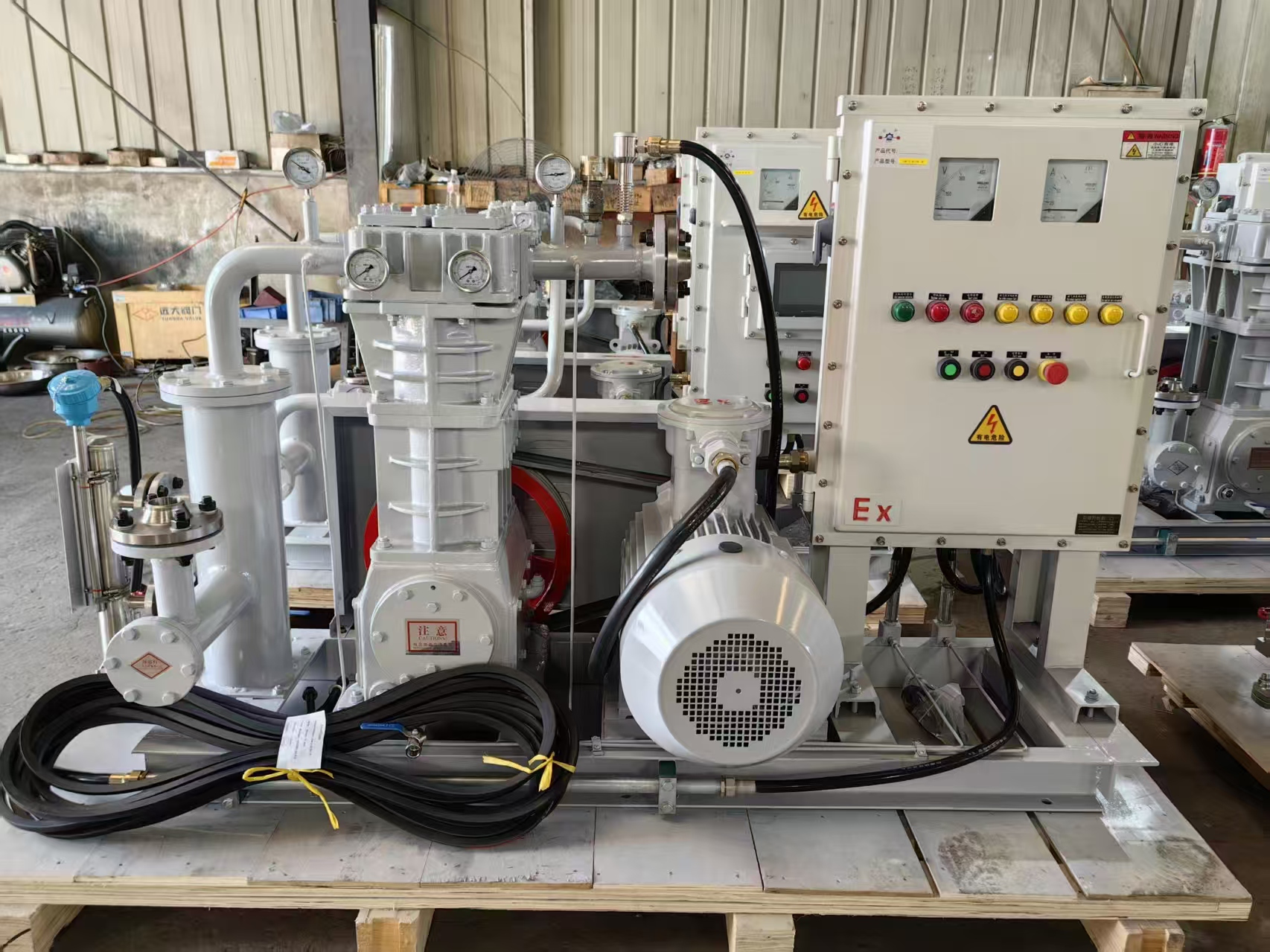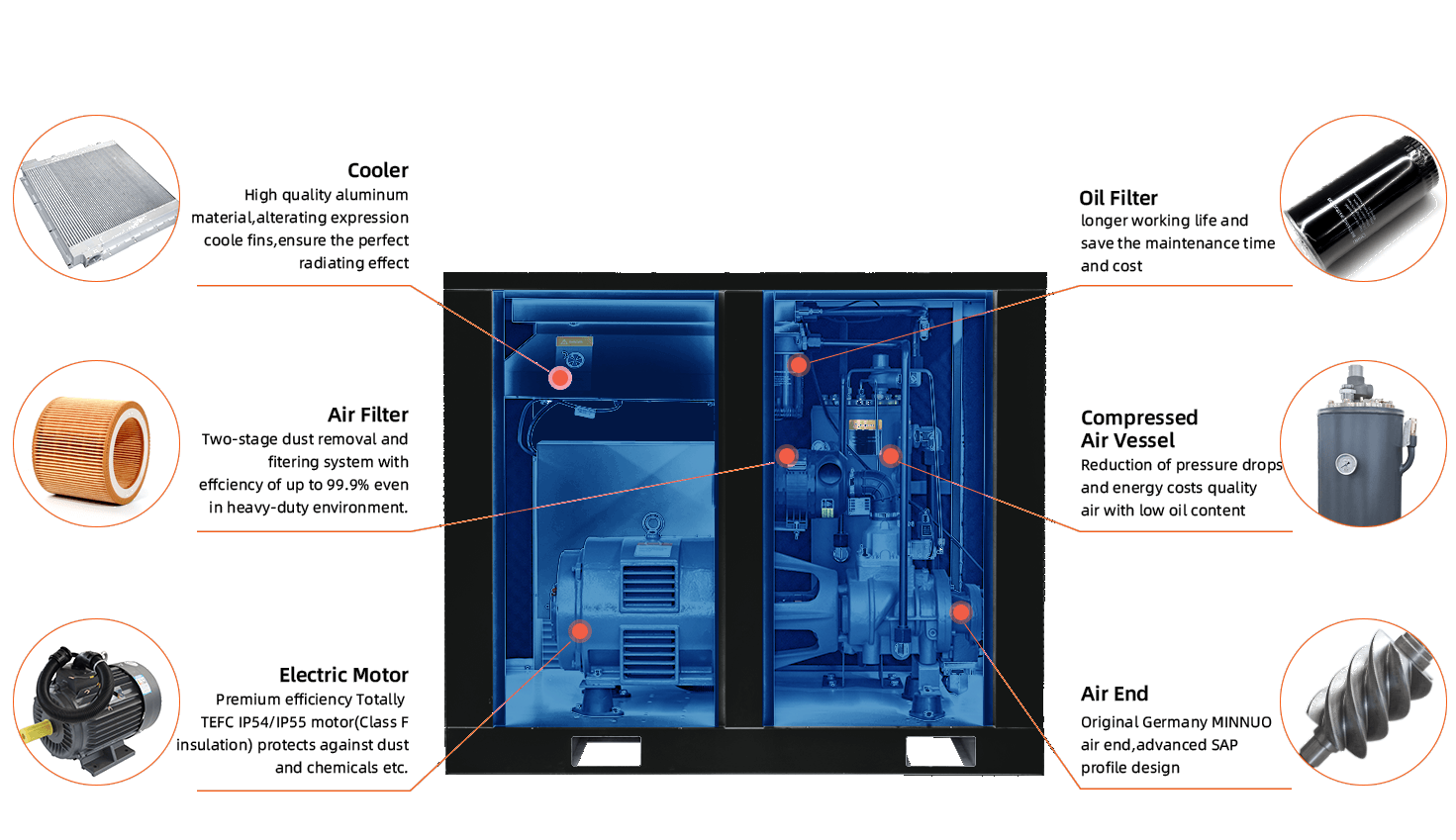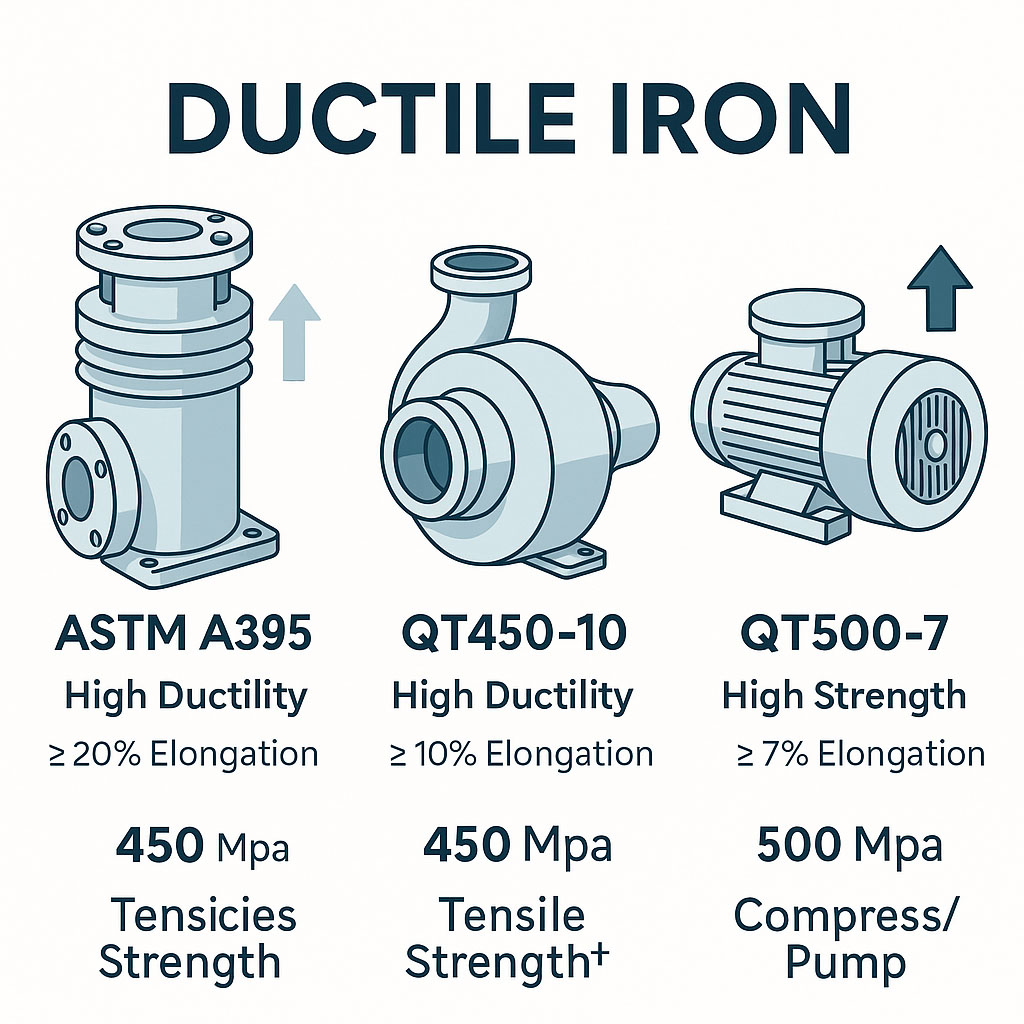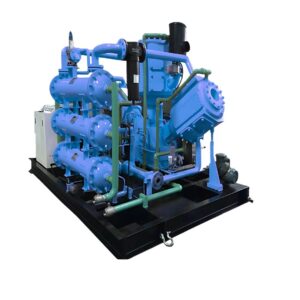Lorsque les processus industriels exigent une distribution de gaz à haute pression, compresseurs de gaz alternatifs-également appelés compresseurs à piston - gagnent souvent leurs galons. Contrairement aux compresseurs à vis, ils se distinguent par des taux de compression élevés, un fonctionnement efficace en dehors de la conception et la polyvalence des types de gaz. Mais pour choisir le bon modèle, il faut trouver un équilibre entre la technologie, le dimensionnement, les matériaux et les besoins de maintenance.
1. Réciprocité et vis : Connaître sa technologie
-
Capacité de pression: Les compresseurs à pistons fournissent des pressions beaucoup plus élevées (dépassant souvent 1 200 PSI ou ~80 bar), alors que les compresseurs à vis sont généralement limités à ~250-600 PSIG
-
Cycle d'utilisation et bruit: Les compresseurs à vis offrent fonctionnement continu et performances plus douces et plus silencieuses. Les unités à mouvement alternatif ont un fonctionnement cyclique et génèrent plus de vibrations, bien qu'elles soient plus performantes dans des conditions de charge partielle. .
-
Application Fit: Les compresseurs à pistons conviennent parfaitement aux installations à haute pression, à service intermittent ou aux installations de compresseurs gbp montés sur skid, idéales pour les applications de la construction et de l'entretien des bâtiments. compresseurs industriels à piston dans les installations pétrolières et gazières, les usines de traitement ou les lignes de production d'azote.
🛠 Explore Keep-Win's full [gamme de compresseurs à gaz alternatifs](https://keep-win.com/products/reciprocating-gas-compressors) adaptés aux besoins à haute pression et à plusieurs étapes.
2. Dimensionnement du compresseur : Éviter le sous-dimensionnement ou le surdimensionnement
Un dimensionnement correct garantit la fiabilité et l'efficacité énergétique. Voici comment bien dimensionner votre appareil :
-
Définir des exigences claires en matière de processus: Déterminer le débit requis (CFM/Nm³/h) et la pression de refoulement. Tenir compte de la demande de pointe et des plans d'expansion.
-
Contemporanéité des facteurs et marge de sécurité: Pour plusieurs utilisateurs simultanés, il faut compter sur une simultanéité d'environ 20-30%, puis ajouter un facteur de sécurité de 25-50% pour éviter une chute de pression ou un sous-dimensionnement.
-
Conception des cylindres et de l'utilisation de l'allumette: La plupart des compresseurs à piston mono-étagés ont un cycle de travail de 50%, ce qui signifie qu'ils ont besoin de moteurs plus puissants pour refroidir et éviter la surchauffe.
Variables clés : PSI/bar requis, débit d'air libre (CFM/Nm³/h), cycle de fonctionnement et source d'énergie.
3. Propriétés des gaz et compatibilité des matériaux
Les compresseurs à pistons doivent gérer des propriétés de gaz spécifiques, en particulier pour les gaz agressifs ou de haute pureté. A considérer :
-
Gaz corrosifs ou abrasifs peuvent nécessiter des pistons et des chemises en acier inoxydable, ainsi que des matériaux spécialisés pour les soupapes.
-
Conception des joints doivent éviter la contamination du vecteur - les systèmes d'étanchéité à deux étages ou à poche de purge sont essentiels pour les gaz dangereux ou dont la pureté est critique.
-
Variantes de l'API 618 sont couramment utilisés pour les services pétrochimiques ou cryogéniques - construits avec des tiges à haute résistance et des pièces forgées.
Chez Keep-Win, nos compresseurs sont personnalisables pour les gaz de process, les environnements à forte corrosion ou les normes de haute pureté, ce qui garantit leur adéquation et leur fiabilité dans chaque application.
4. Exigences en matière de pulsations, de vibrations et de fondations
Les compresseurs à piston créent des pulsations de pression et des boucles de vibration si la tuyauterie et les supports ne sont pas conçus correctement. Négliger les bouteilles de pulsation, les supports, les fondations non isolées ou la précharge des tiges de piston peut entraîner une défaillance mécanique ou une réduction de la durée de vie des joints. Une analyse acoustique-mécanique appropriée et une modélisation TAPS sont des étapes typiques pour assurer l'intégrité à long terme.
Keep-Win propose des conceptions de skid API-618 avec des schémas de suppression des pulsations et de fondation entièrement conçus pour garantir la fiabilité sur le terrain.
5. Planification de la maintenance : Utiliser une liste de contrôle éprouvée
Les compresseurs à pistons requièrent une maintenance plus pratique, mais une maintenance correcte garantit le temps de fonctionnement et les économies d'énergie :
Points forts de la liste de contrôle préventive :
-
Quotidiennement ou avant le démarrage : Vérifier le niveau de lubrification, vidanger les condensatsVérifier qu'il n'y a pas de fuites ou de vibrations/bruits inhabituels.
-
Hebdomadaire : Vérifier la tension de la courroieNettoyer les filtres d'aspiration, surveiller le fonctionnement de la vanne de refoulement.
-
Mensuel et trimestriel : Remplacer filtres à huileNettoyer les crépines, vérifier le jeu des cylindres et le couple de la traverse.
-
Annuel : Remplacer les segments de piston, effectuer des essais de pression à l'arrêt, effectuer des diagnostics de vibration au niveau du régime FAT.
Les compresseurs Keep-Win sont livrés avec des programmes d'entretien complets, des schémas de pièces et des kits d'entretien prêts pour la mise en service de l'installation.
6. Coûts du cycle de vie et compromis en matière de fiabilité
Si les compresseurs alternatifs ont généralement des coûts de maintenance plus élevés que les compresseurs à vis, ils compensent ce surcoût par une plus grande facilité d'entretien :
-
Révisions longues espacées de plusieurs années (tiges, soupapes et bagues conçues pour une longue durée de vie)
-
Efficacité de compression supérieure à proximité des conditions nominales
-
Intégration aisée des systèmes multi-étages et des circuits de gaz multiples
Les unités à vis peuvent permettre de réduire les coûts de main-d'œuvre, mais pour les pressions supérieures à ~8 bar ou les cycles d'utilisation avec des contraintes cycliques importantes, les compresseurs alternatifs offrent souvent une meilleure rentabilité sur le cycle de vie.
7. Fonctions de contrôle et d'intégration
Les compresseurs alternatifs modernes intègrent des commandes intelligentes, des déchargeurs variables et une surveillance à distance. Recherchez des systèmes offrant :
-
Chargement/déchargement ou déchargement par étapes
-
Instrumentation intégrée et intégration d'un automate programmable
-
Capacité de détection des fuites et protection contre les surtensions
Le matériel KEEPWORD comprend en option Modules prêts pour l'IdO pour une surveillance et des alertes en temps réel, optimisant ainsi la maintenance et le temps de fonctionnement sans avoir à se déplacer sur le terrain.
Tableau récapitulatif : Principales considérations en matière de conception
| Sujet | Pourquoi c'est important |
|---|---|
| Pression et débit | Répondre aux exigences du système et à l'expansion future |
| Type de technologie | Réciprocateur pour utilisation intermittente/haute pression |
| Matériaux et conception des joints | Éviter les problèmes de compatibilité des gaz et garantir la pureté |
| Pulsation et fondation | Améliorer l'intégrité mécanique et réduire les risques d'immobilisation |
| Planification de la maintenance | Suivre une liste de contrôle pour l'entretien quotidien et annuel |
| Coût du cycle de vie | Privilégier l'efficacité à une simple tarification initiale |
| Contrôles et intégration | Permet la disponibilité grâce à une gestion basée sur la logique |
Pourquoi choisir les packs de solutions Keep-Win ?
Le principe "gagnant-gagnant" est appliqué Conforme à la norme API 618 et compresseur industriel à piston des configurations à un ou plusieurs étages. Nos unités comprennent la conception mécanique, l'atténuation des pulsations, des modules de contrôle intelligents et un support de maintenance documenté. Pour en savoir plus :
-
[Série compresseurs à gaz alternatifs](https://keep-win.com/products/reciprocating-gas-compressors)
-
[Packages de compression de gaz process](https://keep-win.com/products/process-gas-compressors)
Conclusion
Choisir le bon compresseur de gaz alternatif signifie comprendre la pression, le débit, le type de gaz, la conception mécanique et la maintenance tout au long du cycle de vie. En prêtant attention au dimensionnement, aux pulsations et à l'entretien, ces compresseurs offrent une efficacité et une fiabilité inégalées pour les applications à haute pression ou intermittentes.
Pour concevoir un système adapté aux caractéristiques uniques de votre usine, contactez dès aujourd'hui l'équipe d'ingénieurs gaziers de Keep-Win pour obtenir des recommandations personnalisées et un déploiement fiable.











